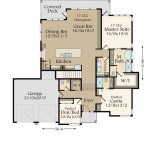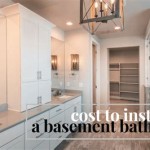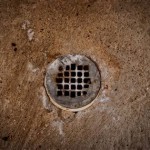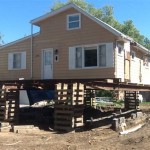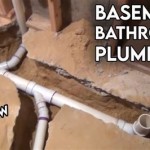How Much Does It Cost To Build A Bowling Alley In Your Basement?
The allure of having a recreational space within one's home has led many to consider building a bowling alley in their basement. This ambitious project transforms a typically underutilized area into a source of entertainment and social gathering. However, understanding the financial implications of such an endeavor is crucial before embarking on the construction process. The cost of building a bowling alley in a basement can vary significantly, influenced by factors ranging from the size and complexity of the project to the materials used and the labor involved.
Estimating the total cost accurately requires a comprehensive assessment of all contributing elements. These elements include the physical space requirements, the required equipment, the necessary construction and installation work, and the potential for additional amenities. Each of these aspects carries its own price tag and must be carefully factored into the overall budget. Furthermore, unexpected challenges, such as structural modifications or unforeseen repairs, can also impact the final cost. Therefore, meticulous planning and thorough research are essential to avoid budget overruns and ensure a successful project outcome.
Key Point 1: Space Requirements and Basement Preparation
The primary driver of cost is the required space. A regulation ten-pin bowling lane, including the approach, lane bed, and pin area, measures approximately 86 feet in length and 41.5 inches in width. For a single-lane installation, additional space is needed for bowlers to move comfortably and for ball return systems. A minimum width of 12-15 feet is typically recommended to allow for adequate maneuvering space and potential seating. Duplicating the lane leads to a corresponding increase in the floor footprint. Basements must also have sufficient ceiling height - a minimum of 10 feet is suggested for unimpeded ball delivery.
Beyond the raw dimensions, the condition of the basement plays a critical role in project costs. A completely unfinished basement lacking proper flooring, wall finishing, and adequate lighting necessitates a more extensive renovation. This is typically the case, with basements often serving as storage spaces or not intended for recreational use. Conversely, a partially finished basement may require less preparatory work, thereby reducing the overall cost. Furthermore, the presence of existing plumbing, electrical wiring, or HVAC systems can influence the project's complexity and expenses. Relocating or modifying these systems may become necessary to accommodate the bowling alley.
Basement preparation often involves leveling the floor to ensure a consistent and even surface for the bowling lane. This may require pouring a new concrete slab or applying self-leveling compounds. The floor must be capable of supporting the weight of the lane and the equipment, which can be substantial. Moisture control is another crucial aspect of basement preparation. Installing a vapor barrier and implementing proper ventilation can prevent moisture damage to the bowling lane and its surrounding structure. Ignoring these preventative measures can lead to costly repairs in the future.
Framing and finishing the walls are important considerations as well. This may involve constructing new walls to enclose the bowling alley area or simply applying drywall and paint to existing walls. Soundproofing the basement can also contribute to the overall cost, but it can significantly enhance the bowling experience by minimizing noise transmission to other parts of the house. Acoustic panels or insulation can be used to achieve effective soundproofing. Lighting is another key element of basement preparation. Adequate lighting is essential not only for safety but also for creating an inviting and enjoyable atmosphere. Recessed lighting, track lighting, or a combination of both can be used to illuminate the bowling alley effectively.
Key Point 2: Equipment Costs and Installation
The bowling alley equipment represents a significant portion of the overall project cost. New bowling lanes can range from $30,000 to $100,000 per lane, depending on the quality of the materials, the brand, and the included features. Used lanes may be a more affordable option, but they often require refurbishment and may not have the same lifespan as new lanes. Pinsetters are arguably the most expensive piece of equipment. New pinsetters can cost between $20,000 and $50,000 per unit. Used pinsetters are subject to higher maintenance costs and may require frequent repairs.
Ball return systems are also necessary for a functioning bowling alley. These systems automatically return the bowling balls to the bowler after each throw. The cost of a ball return system can range from $5,000 to $15,000 per lane. Scoring systems are another important component of a bowling alley. Manual scoring is an option, but most homeowners prefer automated scoring systems for convenience and accuracy. Automated scoring systems can cost between $3,000 and $10,000 per lane, depending on the features and complexity of the system, such as monitor size and graphics capabilities.
Bowling balls and bowling shoes are also necessary. A set of bowling balls can cost between $500 and $2,000, depending on the quality and number of balls desired. Bowling shoes typically range from $50 to $150 per pair. Furthermore, regular maintenance and repairs are going to be added cost. Pinsetters, in particular, require regular servicing and maintenance to ensure proper operation. The cost of a technician will significantly impact the final price.
The installation of the bowling alley equipment is also a significant expense. This typically requires hiring professional installers who have experience with bowling alley construction and equipment installation. Installation costs can vary depending on the complexity of the project and the location of the basement but an average cost would be between $5,000 and $20,000 per lane. Proper installation is crucial to ensure the longevity and functionality of the bowling alley. Incorrect installation can lead to costly repairs and decrease in playing accuracy.
Key Point 3: Additional Amenities and Customization
Beyond the basic components of a bowling alley, homeowners often opt to include additional amenities and customizations to enhance the overall experience. These additions can significantly impact the total cost of the project. Common amenities include seating areas, bar areas, and entertainment systems. Seating areas can range from simple benches to plush lounge chairs, depending on the homeowner's preference and budget. Bar areas can include a countertop, sink, refrigerator, and storage cabinets. Entertainment systems can include a television, sound system, and video game consoles.
Customization options can also add to the cost of the project. These options can include custom lane designs, personalized bowling balls, and unique lighting fixtures. Custom lane designs can involve adding intricate patterns or logos to the bowling lane surface. Personalized bowling balls can be engraved with the homeowner's name or initials. Unique lighting fixtures can create a more stylish atmosphere.
Accessibility is another factor to consider. Installing ramps or lifts to accommodate individuals with mobility issues can add to the cost of the project. However, ensuring accessibility can make the bowling alley more inclusive and enjoyable for everyone. Climate control is also important for creating a comfortable bowling environment. Installing a heating and cooling system specifically for the basement can help maintain a consistent temperature and humidity level. This can be particularly beneficial in regions with extreme temperatures or humidity.
The cost of these additional amenities and customizations can vary widely depending on the homeowner's preferences and budget. A basic seating area may cost a few hundred dollars, while a fully equipped bar area can cost several thousand dollars. Custom lane designs and personalized bowling balls can also add to the cost of the project. Ultimately, the decision of whether or not to include these additional features depends on the homeowner's budget and the desired level of luxury. It is vital to outline these options in your planning phase to keep the project within established guidelines.
Permits and inspections need to be factored into determining the total cost. Building permits may be required to build a bowling alley in a basement, depending on local regulations. The cost of permits can vary depending on the location and the scope of the project. Inspections may also be required to ensure that the bowling alley meets safety standards. Failing to obtain the necessary permits or inspections can result in fines or delays.

How Much Does It Cost To Install A Home Bowling Alley Your Complete Pricing Guide

How Much Does It Cost To Install A Home Bowling Alley Your Complete Pricing Guide

How Much Does It Cost To Install A Home Bowling Alley Your Complete Pricing Guide

Basement Home Bowling Alley Installation On East Coast By Funk

How Much Does It Cost To Install A Home Bowling Alley Your Complete Pricing Guide

Home Bowling Alley Construction Budgeting Installation And Fu Kake

How Much Does It Cost To Install A Home Bowling Alley Your Complete Pricing Guide

Bowling Alley For Your Home Design Build Planners

Home Bowling Alley Lanes In Your House Funk

How To Put A Bowling Alley In Your House
Related Posts

